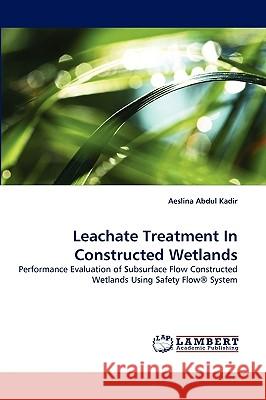Leachate Treatment In Constructed Wetlands » książka
Leachate Treatment In Constructed Wetlands
ISBN-13: 9783838369259 / Angielski / Miękka / 2010 / 136 str.
The increasing application of constructed wetlands for leachate treatment is an ever-growing incentive for the development of better process design tools. This book provides a study that was conducted to investigate leachate treatment performance of horizontal subsurface flow constructed wetlands (HSSFCW) installed with water dispersal system, called Safety Flow(r) to produce a defined subsurface wetting pattern along the line and length of the system. A pilot scale HSSFCW with three parallel reactors was set up with dimensions of 2.45 m length x 0.20 m width x 0.40 m depth. All reactors were dosed using pre-treatment leachate effluent from a landfill in Malaysia. Out of the three reactors, Reactors A and C were planted with Thypha angustifolia, whilst reactor B was not planted and used as a control. In addition, reactor C was installed with water dispersal system. The performance of constructed wetlands system was evaluated from the effluent quality. The main parameters were organic matters, nutrients and heavy metals. The results from this study provide an important outlook for engineers, scientists, environmentalists and researchers in this area.
The increasing application of constructed wetlands for leachate treatment is an ever-growing incentive for the development of better process design tools. This book provides a study that was conducted to investigate leachate treatment performance of horizontal subsurface flow constructed wetlands (HSSFCW) installed with water dispersal system, called Safety Flow® to produce a defined subsurface wetting pattern along the line and length of the system. A pilot scale HSSFCW with three parallel reactors was set up with dimensions of 2.45 m length x 0.20 m width x 0.40 m depth. All reactors were dosed using pre-treatment leachate effluent from a landfill in Malaysia. Out of the three reactors, Reactors A and C were planted with Thypha angustifolia, whilst reactor B was not planted and used as a control. In addition, reactor C was installed with water dispersal system. The performance of constructed wetlands system was evaluated from the effluent quality. The main parameters were organic matters, nutrients and heavy metals. The results from this study provide an important outlook for engineers, scientists, environmentalists and researchers in this area.











